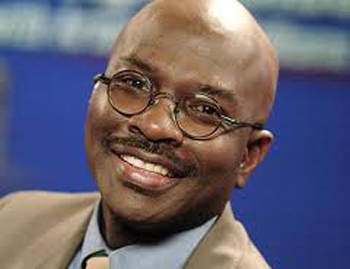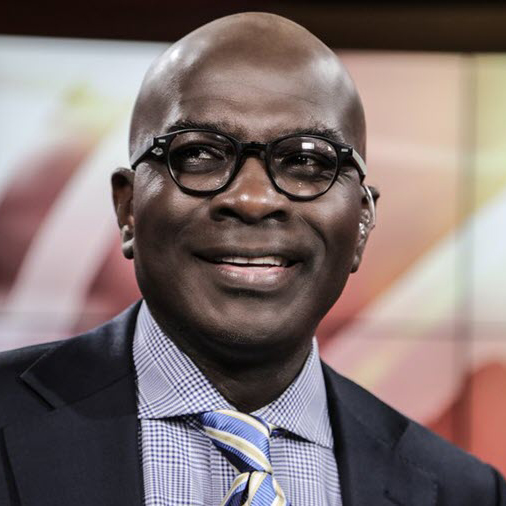The Sinister Case Against Sinclair Broadcast Group

Broadcasters in America are in the fight of their lives. They face fierce and unprecedented competition not only from pay television and the big five networks but also from a new cast of internet video providers.
As one of the nation’s most heavily regulated industries, free over-the-air broadcasters are battling not only for audiences but also for advertising dollars, both of which are waning.
The video market now includes the likes of Facebook, Amazon, Apple, Netflix, Google and other over-the-top (OTT) internet services, in addition to traditional pay-TV providers such as Comcast, AT&T, Charter and Dish, all of which have bigger budgets and deeper pockets to produce more television than your local broadcaster.
None of these companies, though, are subject to any rules that restrict how many TV homes they can reach. Yet, all of them aggregate news, produce video and distribute their content throughout the U.S. with little or no limitation on how many assets they can own.
Not so for television broadcasters who are governed by an arcane, antiquated set of federal rules that hamper their ability to compete in a new and rapidly changing market. Broadcast groups such as Sinclair, Nexstar, Gray, Tegna, Meredith, Ion, Univision, and others, cannot own stations that broadcast to more than 39% of American homes. At the same time, their competitors have no such restriction. It’s like a heavyweight bout with one fighter whose hands are tied behind his back.
Something is fundamentally wrong—and unfair—with this picture.
Although television broadcasting is portrayed as a huge industry, the numbers tell a different story. The largest broadcaster, Sinclair, has a market capitalization of approximately $3 billion. Nexstar, the second largest, has a market capitalization of $3.4 billion. In fact, the combined market capitalization of all major broadcasters is $31 billion. Compare this to the market cap of Facebook at $378 billion, Comcast at $235 billion, Netflix at $59 billion, and Apple at $670 billion.
The smarter way to stay on top of broadcasting and cable industry. Sign up below
Of the $148 billion spent on local advertising in 2017, only 13% went to local television, reflecting a steady decline since the glory days of broadcasting.
Against these odds, traditional television broadcasters like Sinclair have only two choices: grow or die.
In attempting to build the scale needed to survive, broadcasters have faced unreasonable criticism. For years now, Sinclair has been the bete noir of broadcasting. Its size and politics make for an easy and convenient scapegoat in today’s policy debate. So-called public interest groups castigate Sinclair for its right-of-center perspective, ignoring the preponderance of left-leaning journalists, networks, content creators and distributors who dominate the video universe. The level of misinformation on the dangers of a big local broadcaster is astounding.
Now, Sinclair is under attack for scripting an in-station promotional message asking viewers to tune in for a balanced broadcast. The hue and cry from the mainstream media is much ado about nothing. Every broadcaster has a script that it feeds to its affiliates or stations. Every broadcaster is forced to accept programming, messages and other corporate mandates as a fact of life in the broadcast business. That Sinclair has done it with some transparency should be commended not criticized.
To be sure, Sinclair has no shortage of competitors and critics who would love to see the company marginalized into extinction. The well-orchestrated case against Sinclair smacks of opaque, big monied campaigns like “Save Net Neutrality” that derive funding from Silicon Valley billionaires, tech and internet firms and other competitors vying for the audience and advertising share. Curious that Facebook, Google, and other tech firms are now in the uncomfortable glare of public scrutiny. Might they have an interest in shifting attention to another company’s woes to minimize their own? Certainly not out of the question in today’s world.
Of course, we also should keep in mind that Sinclair is poised to become the biggest broadcast group by a lot if its merger with Tribune Media is approved this quarter, as is expected. A merged Sinclair – Tribune is certainly large by broadcast standards, but pales in comparison to its nearest internet or tech competitor in the same business.
We also must not lose sight that Sinclair executives are often portrayed as cozy with the Trump Administration. This fact, alone, seems to justify the ill-informed opprobrium heaped upon the company from every quarter. Unfortunately, what gets conveniently and constantly omitted from this narrative is that Sinclair shows up in every single market where it broadcasts. It covers local high school games and community events and hosts regular town hall meetings like no other. It supports the local chambers of commerce, Rotary Clubs, fundraisers, county fairs, blood drives, safety days and, well, you get the picture. Sinclair has also won hundreds of Emmys, showcasing their commitment to quality journalism.
And one final point that is admittedly self-interested. Sinclair has contributed to the establishment, growth, and viability of minority-owned broadcast business like no other broadcaster. Its support of my company, Howard Stirk Holdings has allowed us to bring relevant, consistent and community focused programming to the African American and main stream communities we serve in Myrtle Beach, Charleston, Flint, Birmingham, Las Vegas, and Tuscaloosa. It has allowed my minority-owned firm to employ and train people from the community and it has provided a foundation for our future growth and success. For all the platitudes about local programming, community service and minority ownership coming from the liberal side of the ledger, I have not found one company willing to put its money where its mouth is.
The case against Sinclair is both sinister and cynical. The company’s critics have assembled an impressive cast of characters to paint Sinclair with a tarred brush. But in their rush to judgment, they have committed the cardinal sin of journalism—failure to cover the whole story truthfully.
Mr. Williams is Manager / Sole Owner of Howard Stirk Holdings I & II Broadcast Television Stations and the 2016 Multicultural Media Broadcast Owner of the year.
Listen to Mr. Williams on Sirius XM126 Urban View nightly 6:00-8:00pm EST.
Follow me on Twitter @arightside.
Armstrong Williams is a principal owner of the Baltimore Sun and manager/sole owner of Howard Stirk Holdings I & II Broadcast Television Stations.

